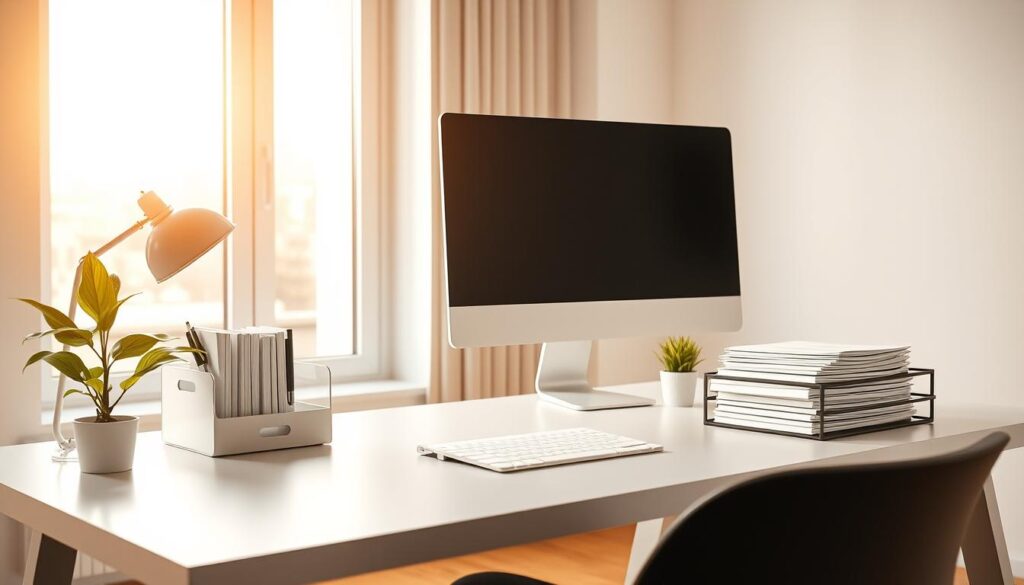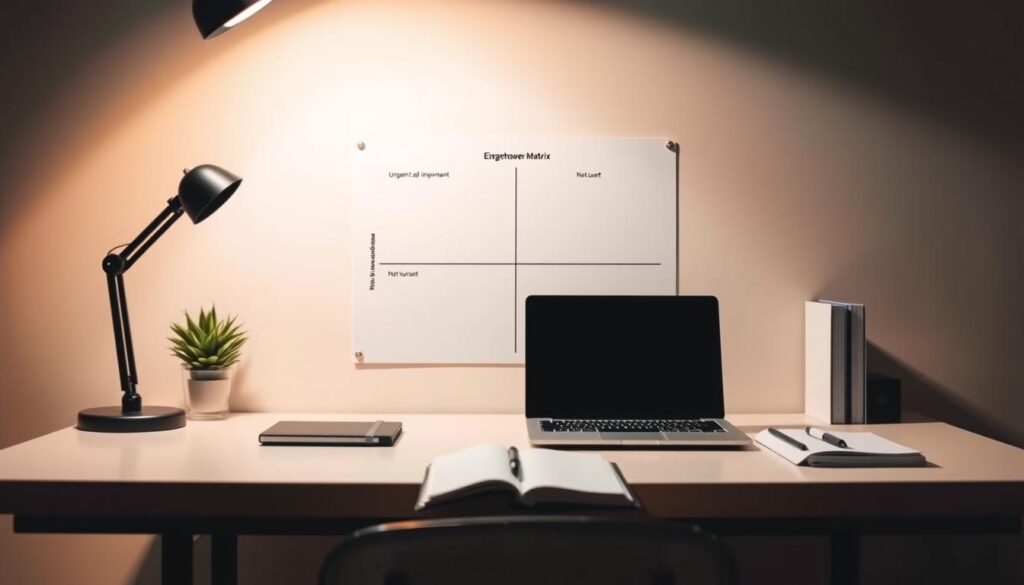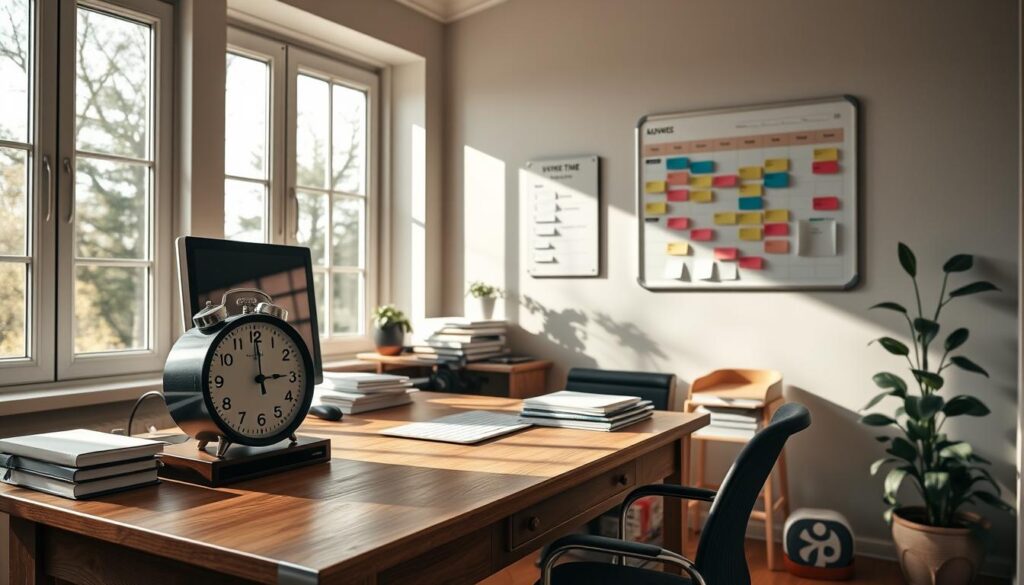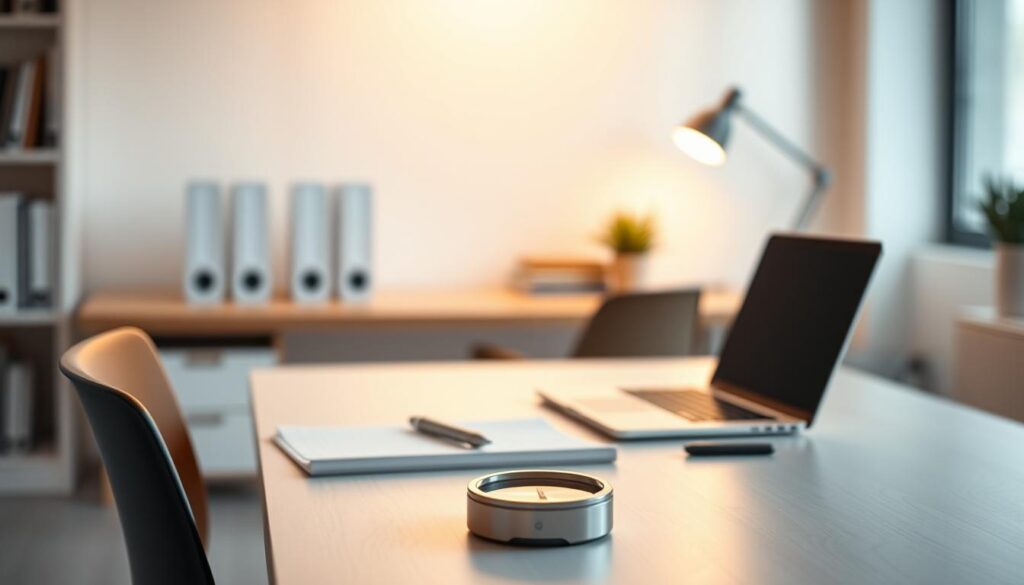Blog
The ‘Zero Inbox’ Method: 5 Email Hacks to Tame Your Inbox Forever

Achieving inbox zero is a daunting task for many professionals. With the average knowledge worker spending around 28% of their workweek reading and answering emails, according to a report by McKinsey, it’s no wonder that email overload is a significant source of stress.
The concept of the ‘Zero Inbox’ method is simple yet powerful: maintaining a clean and organized inbox to boost productivity and reduce stress. By implementing effective email organization strategies, individuals can significantly reduce the time spent on email management, allowing for more focus on critical tasks.
For a comprehensive guide on achieving inbox zero, including practical tips and tools, check out this detailed article on inbox zero strategies.
Key Takeaways
- Understand the concept of the ‘Zero Inbox’ method and its benefits.
- Learn effective strategies for achieving inbox zero.
- Discover tools and techniques to enhance email organization.
- Reduce stress and boost productivity by managing email effectively.
- Implement practical tips to maintain a clean and organized inbox.
The Email Overload Crisis
The average knowledge worker’s email inbox is a breeding ground for digital clutter, significantly impacting productivity. With the average knowledge worker spending around 28% of their workweek reading and answering emails, according to a McKinsey report, it’s clear that email management is a critical aspect of daily tasks.
The Cost of Digital Clutter on Productivity
Digital clutter in the inbox can lead to decreased productivity due to the time spent searching for specific emails, dealing with information overload, and managing unnecessary messages. This clutter can also cause stress and anxiety, further affecting work performance. A cluttered inbox can make it challenging to prioritize tasks effectively.
| Productivity Impact | Time Spent | Stress Level |
|---|---|---|
| Low | Less than 10% | Minimal |
| Moderate | 10%-20% | Moderate |
| High | More than 20% | High |
Why Traditional Email Management Fails
Traditional email management strategies often fail because they don’t address the root causes of email overload. Many methods focus on sorting and filing emails rather than reducing the volume of incoming messages or streamlining the email processing workflow. As a result, these strategies may not lead to long-term productivity gains.
Understanding the ‘Zero Inbox’ Philosophy
At its core, the ‘Zero Inbox’ method is about efficiently managing emails to reduce digital clutter and increase productivity. This approach isn’t just about having an empty inbox; it’s a comprehensive strategy for handling emails effectively.
Origins and Core Principles
The ‘Zero Inbox’ or ‘Inbox Zero’ concept was popularized by productivity expert Merlin Mann. It’s based on the principle of dealing with emails as they arrive or in focused sessions, ensuring that the inbox remains empty or is treated as a temporary holding area for emails that require action. The core principle involves quickly triaging emails into categories such as respond, delegate, archive, or delete, thereby maintaining a clutter-free inbox.
Psychological Benefits of an Empty Inbox
Maintaining an empty inbox has several psychological benefits, including reduced stress and anxiety related to a cluttered inbox. When your inbox is empty, you experience a sense of accomplishment and control over your digital communications. This clarity can translate into other areas of your work, improving overall productivity. Furthermore, an organized inbox facilitates easier reference to past conversations and decisions, aiding in better decision-making.
By adopting the ‘Zero Inbox’ philosophy, individuals can transform their email management from a source of stress into a streamlined process that supports their productivity goals.
Effective Email Management Strategies
To achieve a ‘Zero Inbox,’ one must first master effective email management strategies. This involves understanding the nuances of email handling and creating a system that promotes productivity and reduces digital clutter.
The Difference Between Processing and Checking
A critical aspect of email management is distinguishing between processing and checking emails. Processing emails involves taking action on each email, such as responding, delegating, or archiving, whereas checking emails is merely looking at them without taking any action. Processing emails at a set time each day and disabling email notifications can significantly improve productivity. By focusing on processing, you can reduce the constant distraction caused by checking emails throughout the day.
- Schedule specific times for email processing to maintain focus.
- Disable email notifications to reduce distractions.
- Use filters and labels to organize emails efficiently.
Setting Up Your Digital Workspace
Setting up your digital workspace is also vital for effective email management. This includes organizing your inbox using filters and labels, making it easier to categorize and prioritize emails. A well-organized inbox reduces stress and increases efficiency. As noted by productivity experts, a cluttered inbox can lead to a cluttered mind, emphasizing the importance of a well-managed digital workspace.

Email Hack #1: The 2-Minute Rule
One of the most effective email hacks for a clutter-free inbox is implementing the 2-minute rule. This simple yet powerful technique is designed to help you manage your emails more efficiently by dealing with messages that require less than 2 minutes to respond or act upon immediately.
Identifying Quick-Action Emails
The first step in applying the 2-minute rule is to identify emails that can be quickly acted upon. These are typically messages that require a simple response, confirmation, or a brief action. To maximize the effectiveness of this rule, it’s crucial to quickly scan your inbox and flag emails that meet the 2-minute criteria.
Decision-Making Framework
A decision-making framework is essential for determining when to apply the 2-minute rule. This involves assessing the urgency and importance of each email. Emails that are both urgent and important should be prioritized and dealt with immediately if they can be resolved within 2 minutes.
When to Reply Immediately
Reply immediately to emails that:
- Require a simple response or confirmation.
- Are time-sensitive and have a deadline.
- Can be resolved with a single action or response.
When to Defer
Defer emails that:
- Require extensive research or complex responses.
- Need input or action from others.
- Are not time-sensitive.
| Email Type | Action | Time Required |
|---|---|---|
| Simple Response | Reply Immediately | Less than 2 minutes |
| Complex Issue | Defer | More than 2 minutes |
| Time-Sensitive | Reply Immediately | Less than 2 minutes |
By implementing the 2-minute rule, you can significantly reduce the number of emails in your inbox, enhancing your productivity and streamlining your email management. This hack is a fundamental step towards achieving a ‘zero inbox’ and improving overall communication hacks.
Email Hack #2: Strategic Folder Architecture
The key to maintaining a ‘Zero Inbox’ lies in a thoughtful folder organization strategy. A well-structured folder architecture is the backbone of effective email management, enabling you to categorize and retrieve emails efficiently.
Minimalist vs. Detailed Filing Systems
When it comes to folder organization, there’s a fine line between being minimalist and overly detailed. A minimalist approach uses broad categories, reducing complexity but potentially leading to clutter within folders. On the other hand, a detailed filing system involves creating multiple subfolders, which can be time-consuming to maintain but offers precision in email categorization.
The ideal approach lies in striking a balance between these two extremes. For instance, using a combination of broad categories with a few key subfolders can provide both simplicity and specificity.
Creating Action-Based Categories
Action-based categories are crucial for a productive email management system. By organizing emails based on the actions required, you can prioritize tasks more effectively.
Project-Specific Folders
Creating folders for specific projects allows you to keep related emails together, making it easier to track progress and deadlines. For example, if you’re working on a marketing campaign, having a dedicated folder for that campaign can help you quickly access relevant communications.
Time-Based Folders
Time-based folders, such as those for specific months or quarters, can be useful for archiving emails that are no longer active but need to be retained for record-keeping purposes.
To illustrate the effectiveness of different folder structures, consider the following comparison:
| Folder Structure | Advantages | Disadvantages |
|---|---|---|
| Minimalist | Easy to maintain, less time-consuming | Potential for clutter within folders |
| Detailed | High precision in email categorization | Time-consuming to set up and maintain |
| Hybrid | Balances simplicity and specificity | Requires initial planning |
By implementing a strategic folder architecture, you can significantly enhance your email organization and reduce digital clutter. Utilizing labels and filters can further automate the process, ensuring that your inbox remains streamlined and manageable.
Email Hack #3: Scheduled Processing Blocks
Scheduled processing blocks offer a powerful approach to email organization by allocating specific times for email tasks. This strategy helps in reducing the constant distractions caused by frequent email checks, thereby enhancing productivity.
The Science of Batching Email Tasks
Batching email tasks involves grouping similar activities together and completing them in one session. This approach is based on the principle that switching between tasks can be costly in terms of time and mental energy. By dedicating specific times to email management, individuals can minimize the overhead of task switching and maximize their productivity.
Benefits of Batching Email Tasks:
- Reduced task switching overhead
- Increased focus on a single task
- Improved overall productivity
Creating an Email Schedule
To implement scheduled processing blocks effectively, it’s crucial to create an email schedule that aligns with your work pattern and productivity peaks. This involves identifying the most productive times of the day and allocating them to focused email management.
Morning vs. Afternoon Processing
The choice between morning and afternoon processing depends on individual productivity patterns. Some people are more alert and focused in the morning, making it an ideal time for complex email tasks. Others might find their productivity peaks in the afternoon.
| Time of Day | Productivity Level | Suitability for Email Tasks |
|---|---|---|
| Morning | High | Ideal for complex tasks |
| Afternoon | Moderate | Suitable for routine tasks |
Notification Management
Effective notification management is critical when implementing scheduled processing blocks. It’s essential to minimize distractions during focused work periods by turning off notifications or setting your status to “Do Not Disturb.”
Tip: Customize your notification settings to allow messages from priority contacts, ensuring you’re always reachable when needed.
By adopting scheduled processing blocks and managing notifications effectively, individuals can significantly enhance their email productivity and reduce stress.
Email Hack #4: Template Responses for Recurring Messages
In the quest for email organization, leveraging template responses for common messages emerges as a practical communication hack. This strategy not only saves time but also enhances productivity by reducing the effort spent on repetitive emails.
Identifying Patterns in Your Communication
To effectively utilize template responses, it’s crucial to first identify patterns in your email communication. Analyze your inbox to pinpoint common themes or questions that recur.
By recognizing these patterns, you can begin to craft template responses that address these common interactions, thereby streamlining your email management process.
Building a Template Library
Once you’ve identified the patterns, the next step is to build a template library. Start by drafting templates for the most common email types you’ve identified. Ensure these templates are clear, concise, and maintain a professional tone.
Personalization Elements
While templates save time, it’s essential to incorporate personalization elements to maintain a human touch. This can be achieved by including the recipient’s name, referencing specific details related to their query, or tailoring the tone to suit the recipient.
Tone Considerations
The tone of your template responses is crucial. Ensure that the tone is consistent with your professional brand and is appropriate for the context. Be mindful of cultural differences and the potential for misinterpretation.
| Template Type | Purpose | Personalization Tips |
|---|---|---|
| Response to Inquiry | Acknowledge receipt and provide initial response | Use recipient’s name, reference their inquiry |
| Project Update | Provide status update on ongoing projects | Include specific project details, use a positive tone |
| Follow-up | Check in on pending actions or responses | Reference previous communication, be polite |
By implementing template responses for recurring messages, you can significantly enhance your email organization and productivity. This hack, combined with the right productivity apps, can transform your email management experience.
Email Hack #5: Productivity Apps for Advanced Email Management
In the quest for a ‘Zero Inbox,’ productivity apps play a crucial role in optimizing email management. These advanced tools are designed to help you manage your inbox more efficiently, reducing digital clutter and enhancing productivity.
AI-Powered Email Assistants
AI-powered email assistants are revolutionizing email management by automating routine tasks, such as sorting emails, setting reminders, and even composing responses. These intelligent tools learn your preferences over time, allowing for more personalized email handling.
- Automated Email Sorting: Quickly categorize incoming emails based on priority.
- Smart Reminders: Set timely reminders for follow-ups and deadlines.
- Email Composition: Assist in drafting emails based on your writing style.
Integration Tools for Workflow Optimization
Integration tools are vital for optimizing your workflow, enabling seamless connections between your email and other productivity apps. This integration enhances your ability to manage tasks and schedule appointments directly from your inbox.
Task Management Connections
By integrating your email with task management tools, you can convert emails into actionable tasks with ease. This streamlines your workflow, ensuring that important tasks are not overlooked.
Calendar Integration
Calendar integration allows you to schedule appointments and meetings directly from your email. This feature reduces the back-and-forth typically involved in setting up meetings, making your scheduling process more efficient.
By leveraging these productivity apps, you can significantly enhance your email management capabilities, moving closer to achieving a ‘Zero Inbox.’
Measuring Success and Maintaining Your Zero Inbox
To sustain the benefits of a zero inbox, it’s essential to track key performance indicators and adhere to a regular maintenance routine. This ensures that your email management strategies remain effective over time.
Tracking Metrics That Matter
Monitoring the right metrics is crucial for understanding the effectiveness of your email management strategies. Key metrics to track include:
- Email Volume: The number of emails received daily or weekly.
- Response Time: The average time taken to respond to emails.
- Inbox Zero Frequency: How often you achieve a zero inbox state.
By tracking these metrics, you can identify areas for improvement and adjust your strategies accordingly. For instance, if you notice a high volume of emails from a particular sender, you might create a filter to manage them more efficiently.
Weekly Maintenance Routines
Establishing a weekly maintenance routine is vital for sustaining your zero inbox state. This routine should include:
- Reviewing and updating filters to ensure they remain relevant.
- Processing emails that have accumulated in your inbox.
- Organizing your folder structure to reflect any changes in your priorities or tasks.
By dedicating time each week to maintaining your email organization system, you can prevent clutter from building up again. As
“A cluttered inbox is a sign of a cluttered mind.”
, maintaining a clean inbox is not just about email management; it’s about enhancing your overall productivity.

Conclusion
Effective email management is crucial for boosting productivity and reducing stress. By implementing the strategies discussed, such as the 2-minute rule, strategic folder architecture, and scheduled processing blocks, individuals can achieve inbox zero and enhance their communication hacks.
Achieving and maintaining inbox zero is a continuous process that requires commitment and the right strategies. By adopting these email management best practices, individuals can significantly reduce the time spent on emailing, increase communication speed, and declutter their inbox.
With tools like Clean Email, automating many email management processes becomes effortless, allowing individuals to focus on more critical tasks. By starting the journey towards more effective email management, readers can experience the benefits of a streamlined inbox and improved productivity.






